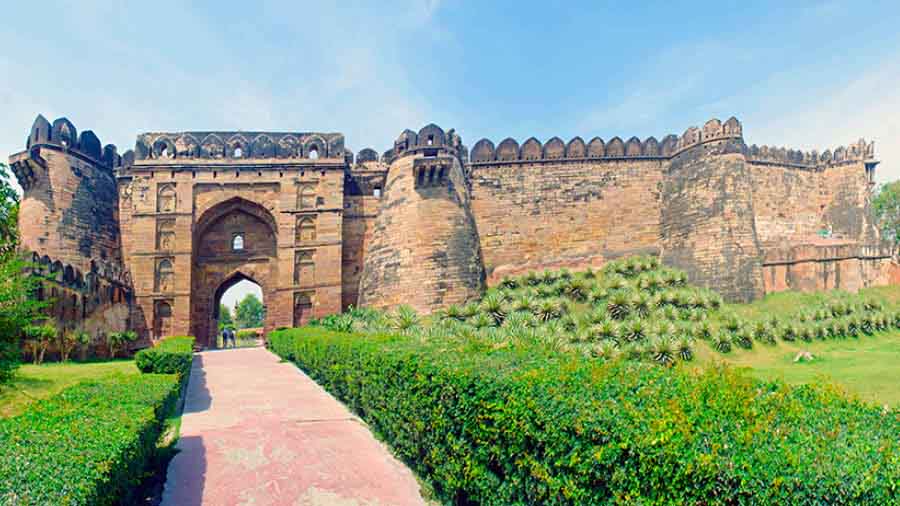A medieval era bridge and a fort, along with half a dozen mosques with towering gateways. This is what that sleepy hamlet of Jaunpur in Uttar Pradesh has to offer. According to historical records Jaunpur served as an independent sultanate under the Sharqi Dynasty (1394 and 1479). Later it came under the control of the Lodis followed by the Mughals. Several of the Sharqi and Mughal structures have survived the test of the time and still tower above the modern cityscape of Jaunpur. What makes Jaunpur unique is the mosque architecture, probably found nowhere in the country. They consist of towering ornate gateways complete with elegant calligraphy along with floral and geometric designs. Although Jaunpur is not a tourist spot but is well connected with Allahabad (100km) and Varanasi (66km) and can be explored in a day trip from any of these two cities.
Shahi Bridge
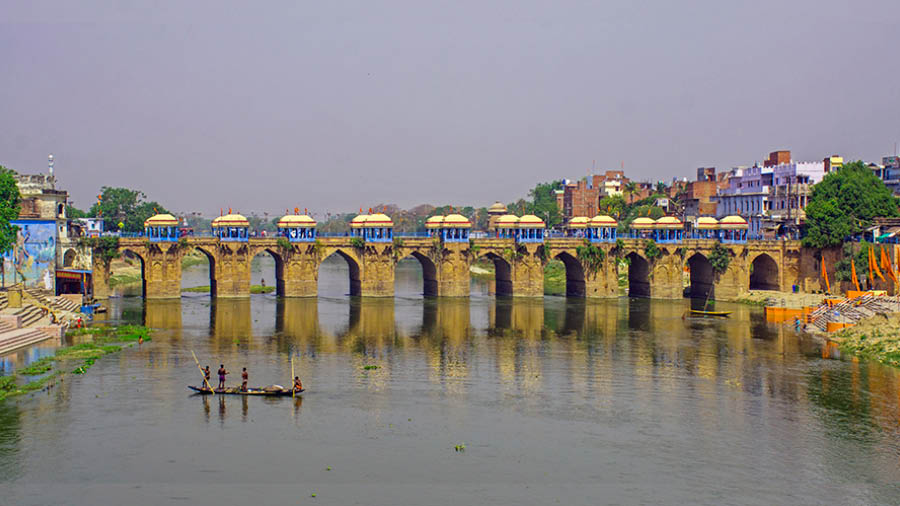
Shahi Bridge spanning across the Gomti River
The town stands on the bank of the Gomti River and today, three bridges span across the river out of which one dates back to the time of Akbar (reign: 1542 – 1605). It was constructed by Munyeen Khankhana in 1564 on the orders of Akbar. The bridge consists of two sections, which are separated by an island, located at the middle of the Gomti River. Supported by arches and pillars, the bridge still operates and plays an important role in the chaotic traffic of Jaunpur. Colorful chhatris line the footpath along both sides of the bridge. There are 28 of them and today they provide makeshift space for shops selling anything from garments to sunglasses.
Jaunpur Fort (Shahi Qila)
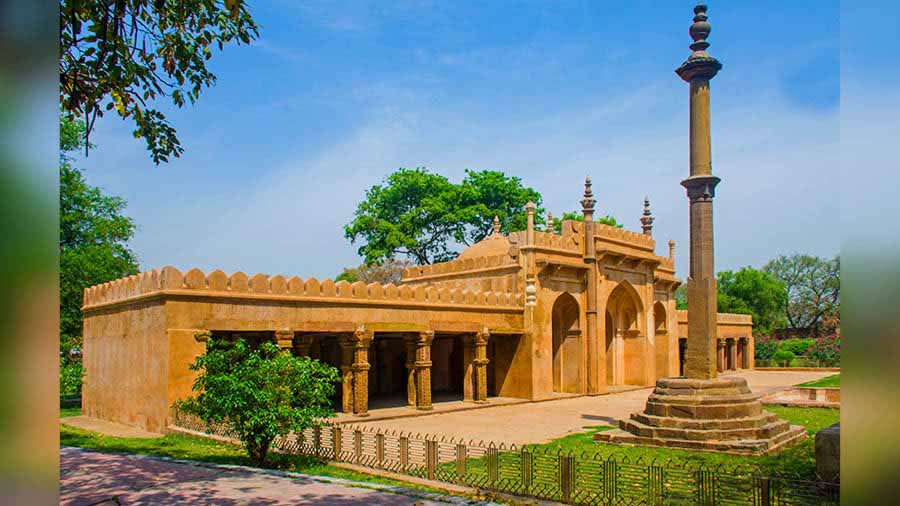
The mosque inside Jaunpur Fort
A short distance away from the Shahi Bridge and north of the Gomti River stands the Jaunpur Fort — complete with towering walls and massive bastions. The fort dates back beyond the Sharqi Dynasty and was constructed by Feroz Shah Tughlaq (reign: 1351 – 88). Today, the entrance is from the eastern side and the interior of the forts are reached through a twin set of massive gateways flaked with massive bastions and topped with battlements. Apart from a mosque and a hammam nothing much has survived inside the fort. Both the structures have been restored recently but restoration has robbed them of their grace and elegance. The mosque dates back to 1376 and was built by Feroz Shah’s brother. It has three domes and a triple-arched entrance on the eastern side. A slender minar stands in front of the mosque. The hammam, built in Turkish style, lies a short distance away from the mosque and was built during the Mughal period. There are several domes with openings allowing natural light to filter inside the hammam. Unlike the mosque, the interiors of the mosque and the hammam are accessible and consist of several rooms connected by a maze of passageways, complete with water channels for hot and cold water.
Atala Masjid
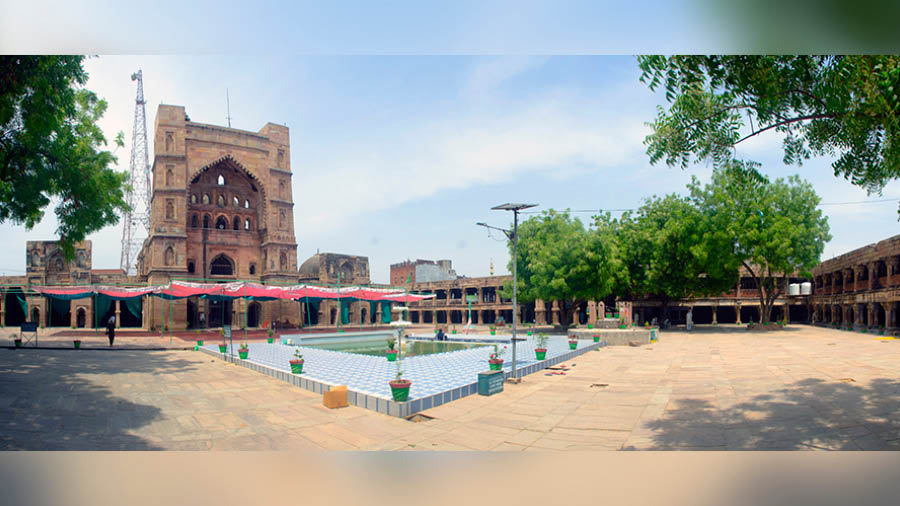
A panoramic view of the inside of Atala Masjid
A short distance north of the fort lies the Atala Mosque, built in 1408 by Ibrahim Shah Sharki (reign 1402 – 40). It is complete with a huge courtyard approachable by three gateways on east, south and north. At the centre of the courtyard is the wazu-khana, a place for ritual washing. On the west is the towering gateway leading to the interiors of the mosque. The gateway, with a huge recessed arch and several other smaller arches, towers to a height of 100 feet.
Shahi Masjid (Jami Masjid of Jaunpur)

The entrance of Shahi Masjid
This lies on the north-west of Atala Masjid and served as the principal mosque of the Jaunpur Sultanate and still operates as the principal mosque of Jaunpur. The foundation stone of the mosque was laid in 1438 by Ibrahim Shah Sharqi and was completed in 1473 by the last ruler of the Sharqi Dynasty, Hussain Shah (reign: 1458 – 79). A long flight of stairs leads to the arched entrance gateway with the dome hidden behind the arch. The plan is similar to Atala Masjid but is much larger in size.
Lal Darwaza Masjid
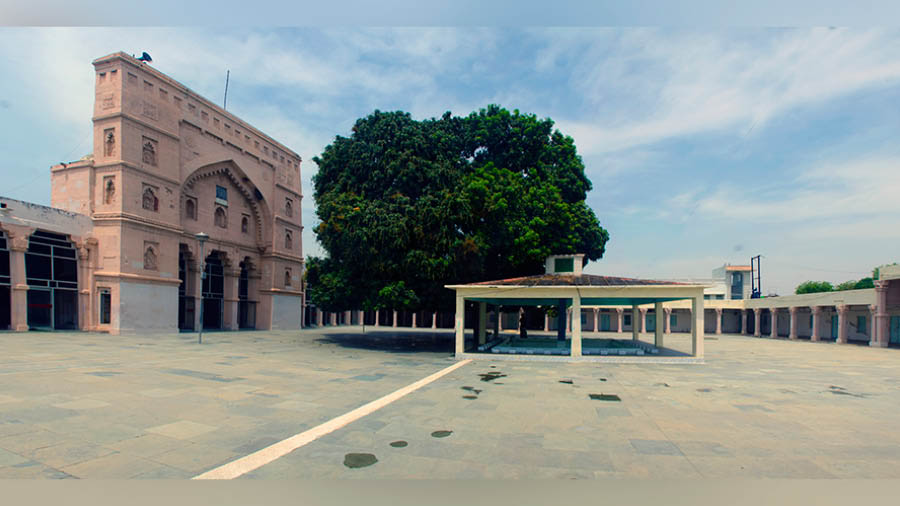
Inside the Lal Darwaza Masjid
This lies about 2.5km north-west of Shahi Masjid and has a similar plan. The masjid dates back to 1447 and was built by Queen Rajye Bibi, wife of Mahamud Shah Sharki (reign: 1457 – 58), and is dedicated to saint Sayyid Ali Dawood Kutubbudin. Sadly, the mosque has been given a new look and in the process has been robbed off of its elegance and grace.
Char Angul Mosque
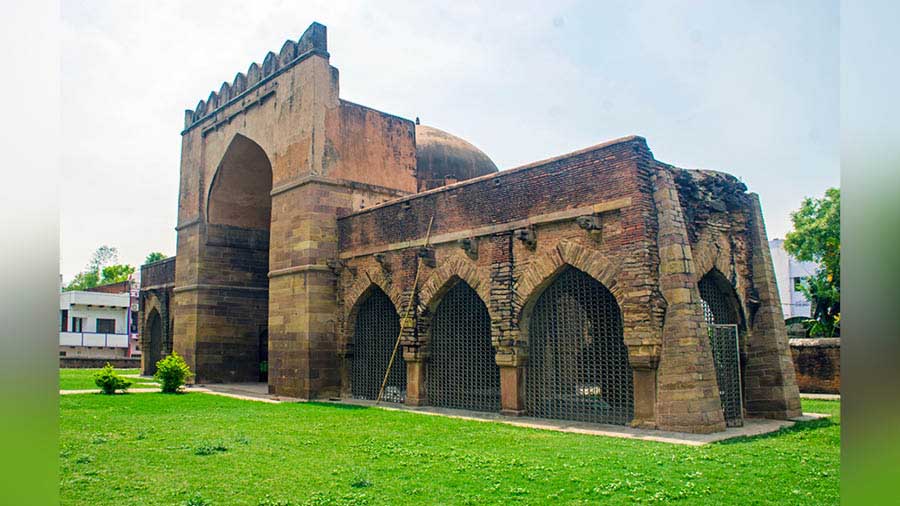
The Char Angul Masjid
This is a hidden gem located deep inside the locality of Mufti Mohalla and is tricky to find. This is a place where local guidance works better than google maps. This is a much smaller mosque and comes without the courtyard. It was built during the reign of Ibrahim Shah Sharqi in 1417 by his brothers. It was built to pay a tribute to the then Sufi saint Sheikh Usman Shirazi. In spite of its small size, it does have an elegant look.
Jhanjhari Masjid

Devotees arriving at Jhanjhari Masjid for their Friday Jumma Namaz
Located on the eastern edge of the town and on the northern banks of the Gomti River, the Jhanjhari Masjid is probably the smallest and the most elegant among Jaunpur’s medieval mosques. It is constructed by Ibrahim Shah Sharki and consists of a towering ornamental arched gateway with beautiful calligraphy from the Koran along with floral and geometric ornamentation.
Travel Information:
- Getting there: Jaunpur is best explored in a day’s trip from Allahabad (100 km) or Varanasi (66 km)
- Getting around: Autos are the best means of conveyance. There are no fixed rates. ₹ 500 – 600 is enough to cover the heritage sites of Jaunpur. You need about 4-5 hours to cover everything
- Food: Don’t miss out the spicy Dariabadi Biriyani
- Entry fee: The fort has an entry fee of ₹ 20 for SAARC nationals and ₹ 100 for other foreigners. There is no entry fee at other sites
- Photography: No restriction apart from a few places within the mosques
